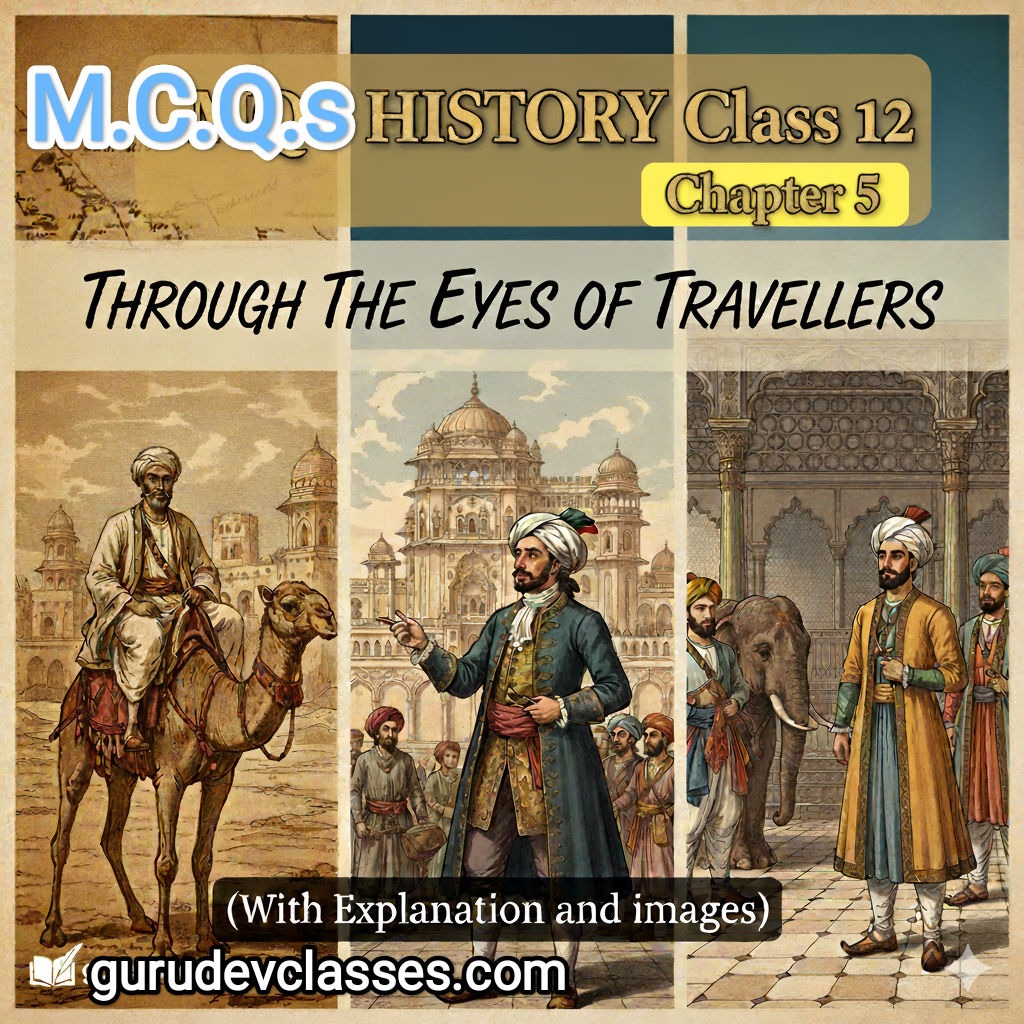Q1. Who among the following is the author of book ‘Kitab-ul-Hind’?
(a) François Bernier
(b) Ibn Juzayy
(c) Ibn Battuta
(d) Al-Biruni
Ans. (d) Al-Biruni
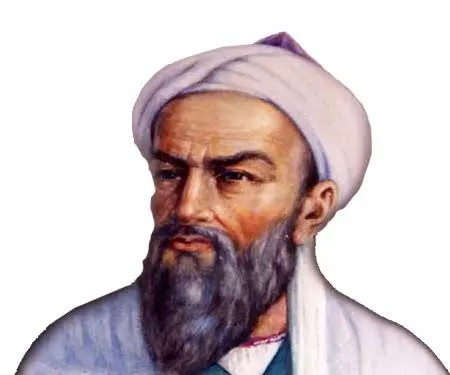
Explanation: Al-Biruni (973-1048), a scholar from Uzbekistan, is the author of the famous book ‘Kitab-ul-Hind’ (or Tahqiq-i-Hind, meaning The History of India). This book, written in Arabic, is a voluminous text covering subjects like Indian religion, philosophy, astronomy, customs, social life, and law. Al-Biruni attempted to understand Indian society by focusing on Sanskrit texts and comparing Indian social practices, like the caste system, with those of other regions.
Q2. To which of the following countries did Ibn Battuta belong?
(a) France
(b) Iran
(c) Arab
(d) Morocco
Ans. (d) Morocco
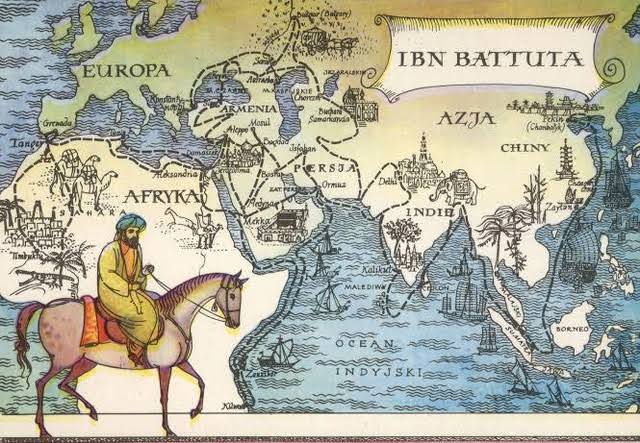
Explanation: Ibn Battuta (1304–1377) was a prolific traveler and scholar who was born in Tangier, Morocco, into a respectable and educated family known for their expertise in Islamic religious law (shari’a). He began his travels in 1325 and eventually reached the Indian subcontinent in 1333, traveling overland through Central Asia.
Q3. In which among the following years did Ibn Battuta reach Sind while travelling overland through Central Asia?
(a) 1333
(b) 1334
(c) 1335
(d) 1336
Ans. (a) 1333
Explanation: Ibn Battuta embarked on his long journey and finally reached the Indian subcontinent in the year 1333, arriving in Sind (in present-day Pakistan). From there, he proceeded to Delhi, where the then Sultan, Muhammad bin Tughlaq, was impressed by his scholarship and appointed him as the qazi (judge) of Delhi.
Q4. Who among the following impressed Muhammad bin Tughlaq, the Sultan of Delhi, and was appointed as the qazi or judge of Delhi?
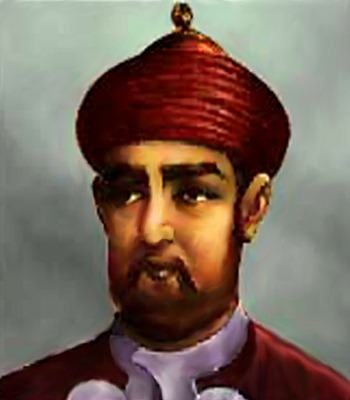
(a) Jesuit Roberto Nobili
(b) Ibn Juzayy
(c) Ibn Battuta
(d) Al-Biruni
Ans. (c) Ibn Battuta
Explanation: When Ibn Battuta arrived in Delhi, the Sultan Muhammad bin Tughlaq was impressed by his learning and appointed him as the qazi (judge) of Delhi. He held this position for several years before a period of disfavor and imprisonment.
Q5. Which book of Bernier among the following is marked by detailed observations, critical insights and reflection?
(a) Rihla
(b) Manusmriti
(c) Travels in the Mughal Empire
(d) None of the above
Ans. (c) Travels in the Mughal Empire
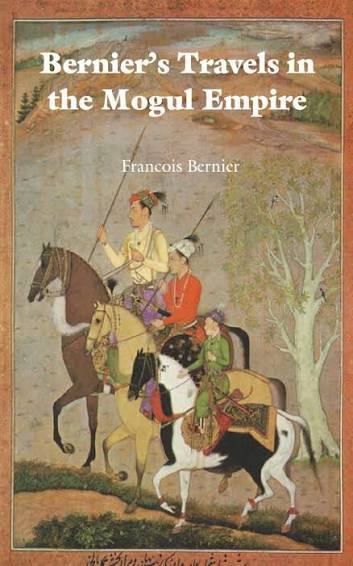
Explanation: François Bernier (1620–1688), a French physician and philosopher, wrote ‘Travels in the Mughal Empire’. This book is famous for his detailed observations and critical comparisons between Mughal India and contemporary Europe, often emphasizing the perceived superiority of the latter. His writing was strategic, aimed at influencing policy-makers and the intelligentsia back in France.
Q6. Whose descriptions among the following influenced western theorists from the eighteenth century onwards?
(a) François Bernier
(b) Montesquieu
(c) Ibn Battuta
(d) Al-Biruni
Ans. (a) François Bernier
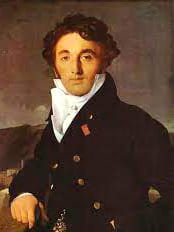
Explanation: François Bernier’s descriptions of Mughal India, particularly his theories on the lack of private property in land (which he incorrectly believed led to social and economic stagnation), heavily influenced Western theorists. The French philosopher Montesquieu used Bernier’s account to develop the idea of Oriental Despotism, suggesting that rulers in Asia enjoyed absolute, tyrannical authority over their impoverished subjects.
Q7. Who among the following was the king of France to whom Bernier dedicated his major writing?
(a) Louis X (b) Louis IX (c) Louis XIV (d) Louis XII
Ans. (c) Louis XIV
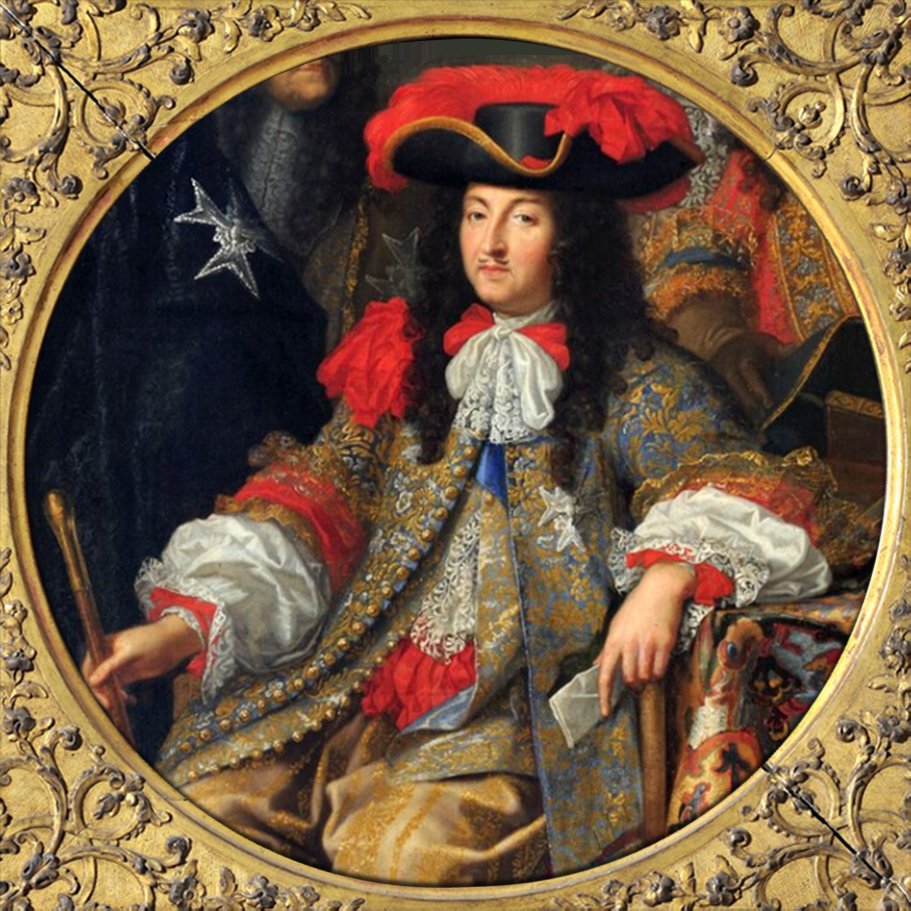
Explanation: François Bernier dedicated his major work, Travels in the Mughal Empire, to Louis XIV, the King of France. This dedication was part of his strategy to influence the ruling class and policy-makers in his home country.
Q8. According to Ibn Battuta’s description of the postal system, which is the horse-post run by royal horse stationed at a distance of every four miles?
(a) Uluq
(b) Dawa
(c) Antyaja
(d) Aesin
Ans. (a) Uluq
Explanation: Ibn Battuta described the efficiency of the Indian postal system. He noted two main types:
(i) Uluq (Horse-post): Run by royal horses stationed every four miles.
(ii) Dawa (Foot-post): Had three stations per mile

(or one station every one-third of a mile). The system was crucial for merchants to send information, remit credit, and dispatch goods quickly.
Q9. About which one of the following languages Al-Biruni said, “If you want to conquer this difficulty you will not find it easy, because the language is of an enormous range, both in words and inflections…”?
(a) Sanskrit
(b) Hindi
(c) Prakrit
(d) Pali
Ans. (a) Sanskrit
Explanation: Al-Biruni, in his attempt to understand India, relied on Sanskrit texts and faced significant language barriers. He specifically described Sanskrit as being of “an enormous range, both in words and inflections,” highlighting the challenges of mastering it for scholarly purposes.
Q10. Al-Biruni attempted to suggest that social divisions were not unique to India. Which social division among the following was he suggesting?
(a) Gender system
(b) Religion system
(c) Caste system
(d) All of these
Ans. (c) Caste system
Explanation: Al-Biruni was comparing the caste system (varna system) of India with social stratification in Persia, where he noted four social groups. By doing this, he was attempting to suggest that social divisions were not exclusive to India, thus trying to make the unfamiliar system more comprehensible to his readers by finding parallels in other societies.
Q, 11. Which among the following was the category that were often expected to provide inexpensive labour to both peasants and zamindars?
(a) Vaishya
(b) Kshatriya
(c) Antyaja
(d) Shudra
Ans. (c) Antyaja
Explanation: The Antyaja (meaning “born at the end”) were groups, often equated with the Chandalas, that were considered outside the four-fold varna system. Al-Biruni categorized these groups and noted that they were often expected to perform tasks such as scavenging, cleaning, and providing cheap labor, making them indispensable but socially marginalized.
Q12. Which of the following statements is correct regarding Ibn Battuta and Indian cities?
(a) The subcontinent was full of exciting opportunities for those who had the necessary drive, resources, and skills.
(b) They were less populated and prosperous.
(c) All cities had crowded streets and bright and colourful markets that were stacked with a wide variety of goods.
(d) Daulatabad was a vast city, with a great population, the largest in India.
Ans. (a) The subcontinent was full of exciting opportunities for those who had the necessary drive, resources, and skills.
Explanation: Ibn Battuta found Indian cities, such as Delhi and Daulatabad, to be densely populated and prosperous, describing their markets as “bright and colourful” and stacked with a “wide variety of goods.” However, the most overarching correct statement is (a), as his accounts repeatedly emphasize that the Indian subcontinent was a place full of opportunities for people like himself who had the drive and skills to succeed.
Q13. Which among the following plants according to Ibn Battuta’s were completely unfamiliar to his audience?
(a) Coconut and paan.
(b) Coconut and Bamboo
(c) Bamboo and paan
(d) Bamboo and coconut
Ans. (a) Coconut and paan.

Explanation: As a North African traveler, Ibn Battuta meticulously described things that would have been strange or unfamiliar to his audience back home. He dedicated detailed sections to two specific plant products that were common in India but alien to him: the coconut (which he compared to a man’s head) and paan (betel leaf and areca nut), detailing the method of chewing it.
Q14. Which of the following options given by Ibn Battuta describes slaves in India?
(a) There was considerable differentiation among slaves.
(b) Some male slaves in the service of the Sultan were experts in music and dance.
(c) Male slaves were also employed by the Sultan to keep a watch on his nobles.
(d) Slaves were generally not used for domestic labour.
Ans. (a) There was considerable differentiation among slaves.
Explanation: The statement (a) There was considerable differentiation among slaves is the most accurate summary of Ibn Battuta’s detailed account. He notes that female slaves were often used for music and dance, male slaves for domestic labor and surveillance of nobles, and they were often gifted, showing their distinct roles and status. The other options are incorrect descriptions (like (d)) or only address one specific function rather than the overall variety.
Q15. Read the following information and identify the author.
Contemporary European travelers and writers often highlighted the treatment of women as a crucial marker of difference between Western and Eastern societies. Not surprisingly, he chose the practice of sati for detailed description. He noted that while some women seemed to embrace death cheerfully, others were forced to die.
(a) Battuta
(b) Ibn Juzayy
(c) Bernier
(d) Al-Biruni
Ans. (c) Bernier Explanation: François Bernier focused on the treatment of women, specifically the practice of sati (the ritual suicide of a widow), as a marker of the perceived ‘backwardness’ of Indian society compared to Europe. His accounts often sensationalized and criticized such practices to support his overall argument about the “depotism” of the Mughal rule.
Q16. Who state that “There is no middle state in India”?
(a) Ibn Battuta
(b) Bernier
(c) Pelsaert
(d) Al-Biruni
Ans. (b) Bernier
Explanation: François Bernier famously made the observation that in Mughal India, there was “no middle state” (or middle class). This was central to his thesis of Oriental Despotism, where he described society as consisting of two extremes: the very rich and powerful ruling class, and the “undifferentiated masses of impoverished people.” He claimed there was no substantial social group between these two extremes.
Q17. A Dutch traveler, visited the subcontinent during the early decades of the seventeenth century. Like Bernier, he was shocked to see the widespread poverty, “poverty so great and miserable that the life of the people can be depicted or accurately described only as the home of stark want and the dwelling place of bitter woe”.
Identify the Dutch traveler.
(a) Bernier
(b) Karl Marx
(c) Montesquieu
(d) Pelsaert
Ans. (d) Pelsaert

Explanation: The Dutch traveler mentioned is Francisco Pelsaert, who visited the subcontinent during the early decades of the seventeenth century. His account, like Bernier’s, highlighted the vast economic disparity and the “widespread poverty,” famously describing the life of the poor as the “home of stark want.”
Q18. Abu’l Fazl, the sixteenth-century official chronicler, describes the land revenue as “remunerations of sovereignty”. Who among the following was the ruler at that time?
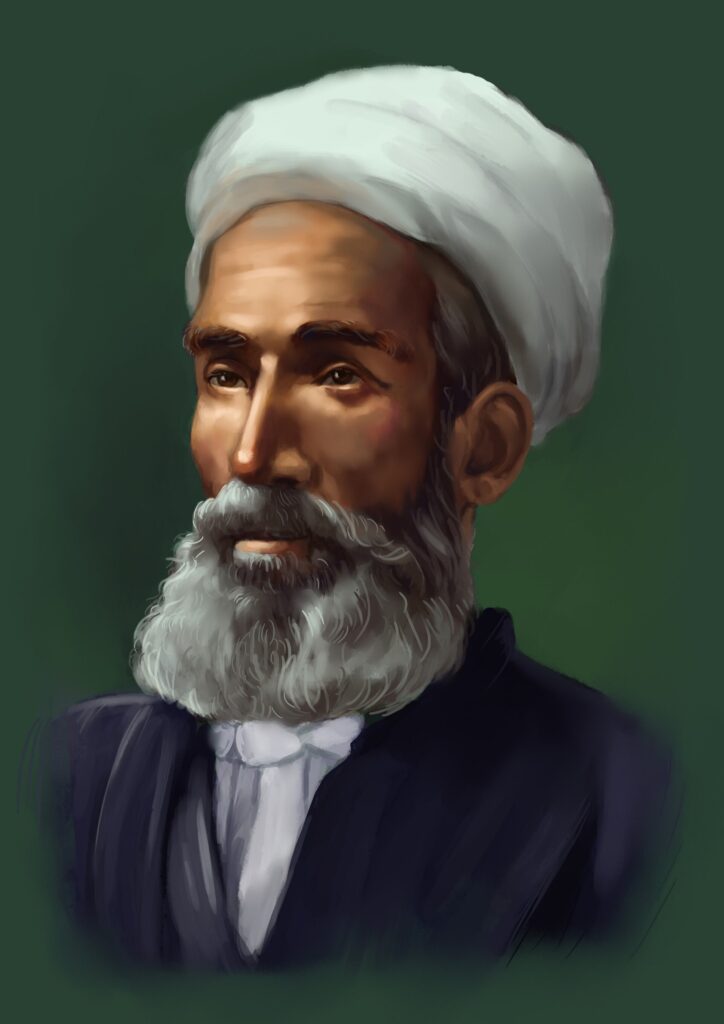
(a) Akbar
(b) Babur
(c) Shahjahan
(d) None of these
Ans. (a) Akbar
Explanation: Abu’l Fazl was the official chronicler of Akbar‘s reign (1556–1605). He wrote the Akbar Nama (including the Ain-i-Akbari), in which he described land revenue as a “remuneration of sovereignty”—a payment made by the subjects to the ruler in return for the protection he provided, rather than as a rent for land he owned. This concept was in contrast to Bernier’s theory of state landownership.
Q19. Merchants often had strong community or kin ties, and were organised into their own caste-cum-occupational bodies. What was the name of these groups in western India?
Choose the correct answer from the following options:
(a) Hakim
(b) Nagarsheth
(c) Mahajans
(d) All of these
Ans. (c) Mahajans Explanation: In western India (such as in Ahmedabad), groups of merchants were organized into corporate bodies known as Mahajans. The chief of the Mahajan in a particular urban center, who collectively represented the merchant community, was often called the Nagarsheth.
Q20. Which of the following authors visited Europe and confronted the image that Europeans had of Indian society and tried to influence it by producing their own version of matters?
(a) Shaikh Itisamuddin (b) Mirza Abu Talib (c) Both (a) and (b) (d) Ibn Battuta
Ans. (c) Both (a) and (b)
Explanation: The works of European travelers like Bernier became very popular in Europe. Later, Indian writers like Shaikh Itisamuddin and Mirza Abu Talib traveled to Europe and, upon returning, wrote their own travelogues. They often consciously confronted the distorted or negative images that Europeans had of Indian society, attempting to present a more balanced or alternative perspective.
Q21. Turks referred to the people as “Hindu”.
(a) West of Indus
(b) East to Indus
(c) North of Indus
(d) South of Indus
Ans. (b) East to Indus
Explanation: The term “Hindu” was historically used by the Turks (and earlier by Arab and Persian writers) to refer to the inhabitants of the land “east of the river Indus” (Sindhu). Over time, the meaning of the term evolved to include religious and cultural aspects.
Q22. Abdur Razzaq did not appreciate what he saw in the port which was populated by “a people of Calicut in the likes of whom I had never imagined”, describing them as “a strange nation”.
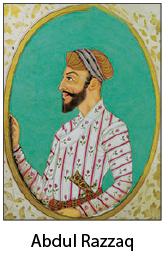
Select the appropriate option:
(a) Manglore
(b) Western Ghats
(c) Kerala
(d) Vishakhapatnam
Ans. (c) Kerala
Explanation: The port of Calicut (Kozhikode) is located in the region of Kerala on the southwestern coast of India. Abdur Razzaq Samarqandi (a visitor from Samaraand in the 15th century) was a sophisticated Persian scholar and observer, and the culture and people of this major trading port were distinct from the North Indian and Central Asian societies he was familiar with, leading him to describe them as a “strange nation.”
Q23. Which one of the following factors is not associated with the question of landownership given by Bernier?
(a) Owing to crown ownership of land, landholders could not pass on their land to their children.
(b) They were averse to any long-term investment in the sustenance and expansion of production.
(c) The absence of public property in land had, therefore, prevented the emergence of the class of “improving” landlords (as in Western Europe) with a concern to maintain or improve the land. (d) It had led to the uniform ruination of agriculture, excessive oppression of the peasantry and a continuous decline in the living standards of all sections of society, except the ruling aristocracy.
Ans. (c) The absence of public property in land had, therefore, prevented the emergence of the class of “improving” landlords (as in Western Europe) with a concern to maintain or improve the land.
Explanation: Bernier’s key argument was that the Crown’s ownership of land (absence of private property) was the root cause of the Mughal Empire’s perceived problems. Statement (c) is factually incorrect in the context of his argument because it mentions the “absence of public property,” whereas Bernier was criticizing the absence of private property. He believed the lack of heritable private landownership disincentivized nobles from investing in long-term improvement (a, b, and d are all parts of his thesis).
Q24. Which one of the following sentences regarding the traveler Ibn Battuta is incorrect?
(a) He was not attacked by bands of robbers several times.
(b) He preferred traveling in a caravan along with companions.
(c) While traveling from Multan to Delhi, his caravan was attacked, and many of his fellow travelers lost their lives. (d) Those travelers who survived, including Ibn Battuta, were severely wounded.
Ans. (a) He was not attacked by bands of robbers several times.
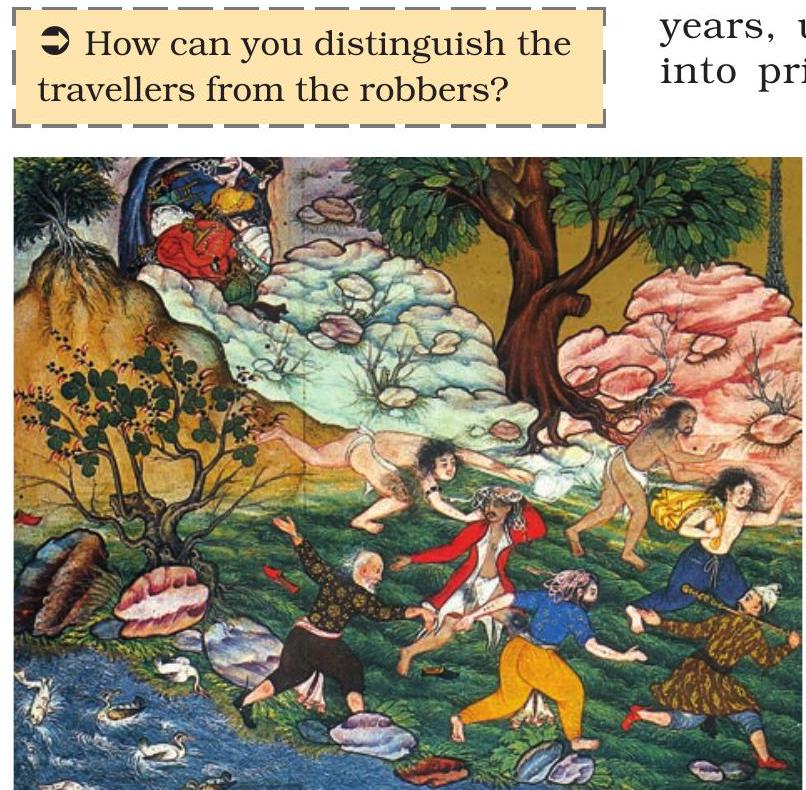
Explanation: This statement is incorrect. Ibn Battuta’s travelogue, the Rihla, provides evidence that he was attacked by bands of robbers several times throughout his journeys, highlighting the dangers of travel in the fourteenth century. He survived one such major attack while traveling from Multan to Delhi.
Q25. Identify the book with the help of the following information:
I. “My departure from Tangier, my birthplace, took place on Thursday….”
II. “I set out alone, having neither fellow traveler nor caravan whose party I might join, but swayed by an overmastering impulse within me and a desire long-cherished in my bosom to visit these illustrious sanctuaries.”
(a) Rihla
(b) Manusmriti
(c) Travels in the Mughal Empire
(d) The lonely traveler
Ans. (a) Rihla
Explanation: The quoted text, detailing the beginning of the journey from Tangier (Ibn Battuta’s birthplace) and the motivation for travel, is a passage from ‘Rihla’ (meaning ‘Journey’ or ‘Travelogue’). This is the book of travels dictated by Ibn Battuta to Ibn Juzayy upon his return to Morocco.
Q26. Consider the following statements:
I. Ibn Battuta received literary and scholastic education when he was quite young.
II. Ibn Battuta’s book of travels, called Rihla, was written in Arabic.
III. It provides extremely rich and interesting details about the social and cultural life in the subcontinent in the fourteenth century.
Which of the above statement(s) is/are correct?
(a) Only I
(b) Only II
(c) I and II
(d) I, II and III
Ans. (d) I, II and III Explanation: All three statements are correct:
- I. Ibn Battuta came from a respectable and educated family of ulama (scholars of Islamic law) and did receive extensive scholastic education early in life.
- II. His travelogue, the Rihla, was written in Arabic.
- III. The Rihla is one of the most important primary sources for understanding the social, cultural, and political life of the Indian subcontinent during the fourteenth century.
Q27. Read the following information given below carefully:
I. He was the sixteenth-century official chronicler of Akbar’s reign.
II. He describes the land revenue as “remunerations of sovereignty”.
III. A claim made by the ruler on his subjects for the protection he provided rather than as rent on land that he owned.
Identify the name of the person from the following options:
(a) Abu’l Fazl
(b) Ibn Battuta
(c) Bernier
(d) Al-Biruni
Ans. (a) Abu’l Fazl
Explanation: The description accurately identifies Abu’l Fazl (the sixteenth-century chronicler of Akbar’s reign) and his concept of land revenue as the “remuneration of sovereignty”
Q28. Match the following traveler and their corresponding country:
List-I: Traveler (Life Span) List-II: Country
A. Muhammad ibn Ahmad Abu Raihan al-Biruni (973–1048) (i) Samaraand
B. Marco Polo (1254–1323) (ii) Morocco
C. Ibn Battuta (1304–77) (iii) Italy
D. Abd al-Razzaq Kamal al-Din ibn Ishaq al-Samarqandi (1413–82) (iv) Uzbekistan
Ans. (b) A-(iv) B-(iii) C-(ii) D-(i)
Explanation:
The correct matches are:
A. Al-Biruni (973–1048) was from (iv) Uzbekistan (specifically Khwarazm, a region now largely in Uzbekistan).
B. Marco Polo (1254–1323) was a famous traveler from (iii) Italy (Venice).
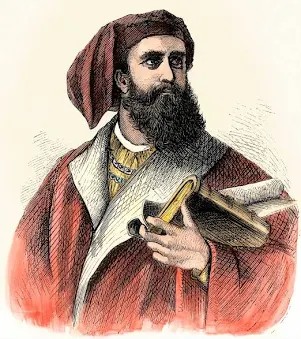
C. Ibn Battuta (1304–77) was from (ii) Morocco (Tangier).
D. Abd al-Razzaq Samarqandi (1413–82) was from (i) Samaraand.
Q29. Which one of the following is a correct pair?
List-I: Traveler ————-List-II: Country
(a) Seydi Ali Reis ———–(i) England
(b) Antonio Monserrate— (ii) Turkey
(c) Peter Mundy ————(iii) Spain
(d) François Bernier ——-(iv) France
Ans. (d) François Bernier (iv) France
Explanation:
François Bernier was a French traveler, physician, and philosopher. The other pairs are incorrect:
Seydi Ali Reis was Turkish.
Antonio Monserrate was a Portuguese Jesuit.
Peter Mundy was English.
Q30. Who translate the works of Euclid (a Greek mathematician) into Sanskrit?
(a) Al-Biruni
(b) Ibn-Battuta
(c) Hasan-Un Nizami
(d) Al-Uthi
Ans. (a) Al-Biruni
Explanation:
Al-Biruni was a polymath who had a deep interest in both Greek and Indian knowledge systems. He translated the works of Greek mathematician Euclid (specifically, Elements) into Sanskrit and translated works of Indian physicians and astronomers into Arabic.
Q31. Who wrote Tarikh-ul-Hind?
(a) Al-Uthi
(b) Al-Biruni
(c) Hasan-un-Nizami
(d) Minhajuddin-bin-sirajduddin
Ans. (b) Al-Biruni
Explanation:
The book Kitab-ul-Hind is also known as ‘Tarikh-ul-Hind’ (History of India) or Tahqiq-i-Hind (Research on India). The author is Al-Biruni.
Q32. How many days did Ibn Battuta take to cover the distance from Daulatabad to Delhi?
(a) 30 days
(b) 40 days
(c) 35 days
(d) 45 days
Ans. (b) 40 days
Explanation:
Ibn Battuta recorded his journeys in great detail, including the time taken between major cities. He noted that the journey from Daulatabad to Delhi took 40 days. For comparison, the same distance took 50 days from Sind to Delhi and 10 days from Delhi to Sind for the foot-post (dawa).
Q33. Which among the following authors translated Indian texts into European languages?
(a) Jesuit Roberto Nobili
(b) Ibn Juzayy
(c) Ibn Battuta
(d) Al-Biruni
Ans. (a) Jesuit Roberto Nobili
Explanation:
Jesuit Roberto Nobili (1577–1656) was an Italian Jesuit missionary who worked in South India. He became deeply versed in local languages and customs and played a role in translating Indian religious and philosophical texts into European languages, often as part of his efforts to engage with and convert the local population.
Q34. Consider the following statements:
I. From the account of Ibn Battuta, it appears that there was considerable differentiation among slaves, while female slaves in the service of their Sultan were expert in music and dance.
II. Slaves were generally used for domestic labour, and Ibn Battuta found their services particularly indispensable for carrying women and men on palanquins or dola.
III. The price of slaves, particularly female slaves required for domestic labour, was very low.
Which of the following statement is correct?
(a) Only I
(b) I and II
(c) I and III
(d) All statements are correct
Ans. (d) All statements are correct
Explanation:
All three statements align with Ibn Battuta’s observations on slavery in the Delhi Sultanate:
I. He noted the distinction in roles, with female slaves often used for entertainment (music/dance) and for domestic work.
II. Slaves were crucial for domestic service, including carrying people in palanquins (dola).
III. He commented that the price of slaves, especially female domestic slaves, was very low in the Indian market, indicating a large supply.
Q35. Consider the following assertion, which is based on Ibn Battuta’s evidence for slavery. I. Slaves were offered as a gift during the rule of Muhammad bin Tughlaq, according to Ibn Battuta. II. Ibn Battuta has provided a detailed account of the practice of slavery in India. III. Muhammad bin Tughlaq, the Sultan of Delhi, had a vast slave population.
Select the correct response.
(a) Only I and II
(b) Only II and III
(c) Only I and III
(d) All statements are correct
Ans. (d) All statements are correct
Explanation:
All statements are consistent with Ibn Battuta’s account:
I. He mentions that he himself received horses, clothes, and slaves when gifted by the Sultan.
II. The Rihla contains rich and detailed information on the sale, functions, and social status of slaves.
III. The Sultan Muhammad bin Tughlaq was known to have a vast slave population and used them extensively for various purposes, from domestic labor to official duties.
Q36. Ibn Battuta was an inveterate traveler who spent several years traveling through North Africa, West Asia and parts of Central Asia, the Indian subcontinent and China, before returning to his native land.
(a) Russia
(b) America
(c) Africa
(d) Morocco
Ans. (d) Morocco
Explanation: As established earlier, Ibn Battuta’s native land was Morocco, in the city of Tangier. After decades of travel, he eventually returned there and dictated his experiences.
Q37. Consider the following statements:
I. Al-Biruni received the best education available at that time and was well versed in several languages: Syriac, Arabic, Persian, English, Hebrew and Sanskrit.
II. Al-Biruni’s Kitab-ul-Hind, written in Persian, is simple and lucid..
Which of the above statement(s) is/are correct?
(a) Only I
(b) Only II
(c) Both I and II
(d) Neither I nor II
Ans. (d) Neither I nor II
Explanation:
Both statements contain incorrect information:
I. Incorrect: While Al-Biruni was a polyglot and knew Syriac, Arabic, Persian, Hebrew, and Sanskrit, there is no evidence he knew English.
II. Incorrect: Al-Biruni’s Kitab-ul-Hind was written in Arabic, not Persian. It is indeed simple and lucid in its structured style.
Q38. Read the following statements regarding ‘The question of landownership’:
I. Bernier’s descriptions influenced Western theorists from the eighteenth century onwards.
II. The French philosopher Montesquieu, used this account to develop the idea of oriental despotism.
III. Rulers in Asia enjoyed absolute authority over their subjects, who were kept in conditions of subjugation and poverty.
IV. According to this view, everybody barely managed to survive. Which of the above statements are correct?
(a) I, II, and III
(b) III, IV and I
(c) I, III and IV
(d) II and IV
Ans. (a) I, II, and III
Explanation:
The core concept of Oriental Despotism, as developed by Montesquieu based on Bernier’s accounts, posits:
I & II (Correct): Bernier’s work influenced Montesquieu, leading to the theory of Oriental Despotism.
III (Correct): This theory held that Asian rulers exercised absolute, arbitrary power over their subjects.
IV (Incorrect): While the theory emphasized subjugation and poverty for the masses, the ruling class was depicted as being extremely rich and powerful, enjoying the spoils of the land at the expense of everyone else. Thus, not everybody barely managed to survive.
Q39. Read the following statements regarding ‘The question of landownership’:
In these centres such as Ahmedabad, the mahajans were collectively represented by the chief of the merchant community who was called the nagarsheth. Other groups included professional classes such as physicians (hakim or vaid), teachers (pundit or mulla), lawyers (wakil), painters, architects, musicians, calligraphers, etc. While some depended on imperial patronage, many made their living by serving other patrons, while still others served ordinary people in crowded markets or bazaars.
Which of the following options is correct regarding this place?
(a) Rural
(b) Urban
(c) Sea
(d) Rivers
Ans. (b) Urban
Explanation:
The description explicitly mentions the concentration of merchants (mahajans, nagarsheth) and various professional classes (physicians, teachers, lawyers, etc.) serving the public in crowded markets or bazaars in centers like Ahmedabad. This concentration of commerce and specialized labor is a defining characteristic of an urban area or city.
Q40. Find the incorrect statement as per the Ibn Battuta’s description about Indian communication system.
I. Ibn Battuta was not so amazed by the work of the postal system which allowed merchants to not only send information and remit credit across long distances, but also to dispatch goods required at short notice.
II. Ibn Battuta describes the postal system: the horse post, called uluq, is run by royal horses stationed at a distance of every four miles. The foot-post has three stations per mile; it is called dawa that is one-third of a mile.
(a) Only I
(b) Only II
(c) Both I and II
(d) Neither I nor II
Ans. (a) Only I
Explanation:
- Statement I is INCORRECT: Ibn Battuta was, in fact, greatly amazed by the efficiency and speed of the Indian postal system, which allowed for the quick transmission of information and goods.
- Statement II is CORRECT: This statement accurately describes the two types of postal systems, uluq (horse-post) and dawa (foot-post), as detailed in the Rihla.
